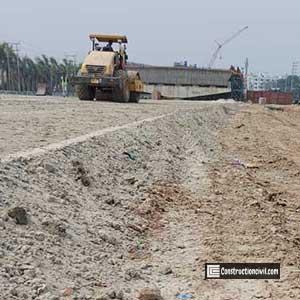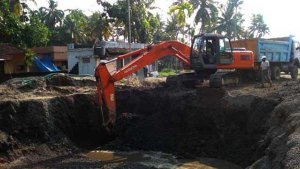When a Civil Engineering project encounters severe foundation conditions, there are two possible alternative solutions; number one is avoiding the particular site, or number two is improving the existing ground. There are several methods of ground improvement techniques in Civil Engineering for cohesive soils and cohesion-less soils, as described below.
Removal and Replacement of Poor In-situ Subsoil With Competent Backfill:
The said ground improvement techniques in civil engineering involve replacing weak compressible cohesive soil, say clayey/silty sub-soil, with selective compacted cohesionless non-plastic (NP) granular (Sand/Gravel) Soil.
- Limited Depth of Application, Generally up to the top of GWT, says up to 3.00 m from OGL.
- Dewatering may be required when it extends beyond GWT.
- In the case of in-situ loose NP cohesionless subsoil loosening and compaction of in-situ soil up to the desired depth is required.
- We obtained “Increased Strength and Stiffness” and reduced compressibility, resulting in a uniform controlled foundation bed.
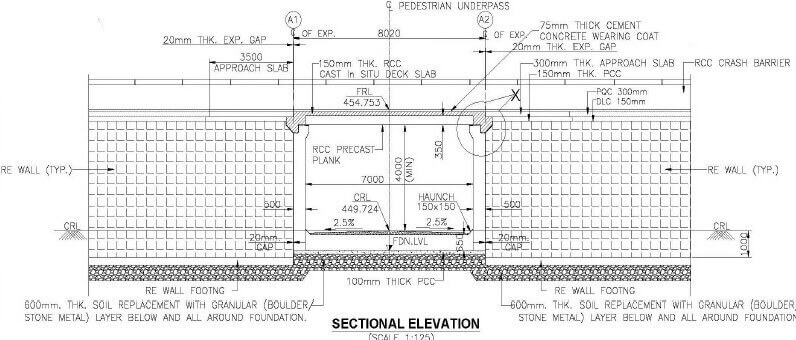
Also, Read: Ground Improvement Techniques – Vertical Drain & Stone Column
Ground Improvement Techniques in Civil Engineering Using In-situ Soil Densification:
If a deposit of cohesion-less soils with N< 10 or sand type material exists at the site, ground improvement can be performed by strong vibration in the ground. Such that relative density increases, accordingly N- Value and Bearing capacity increases.
- Rearrange the soil structure from a loose to medium to a dense state by applying shock and vibration to the subsoil.
- Above ground improvement techniques in civil engineering is applicable, especially for cohesionless Soils under high water table conditions.
- Methods: vibrofloatation, vibrocompaction, compaction piles, blasting and dynamic compaction (in Cohesionless Soil) / Dynamic Consolidation (in Cohesive Soil). Vibroflotation, Vibrocompaction methods involves special equipment and low to moderate level of cost.
- The maximum depth of treatment maybe even beyond 30m.
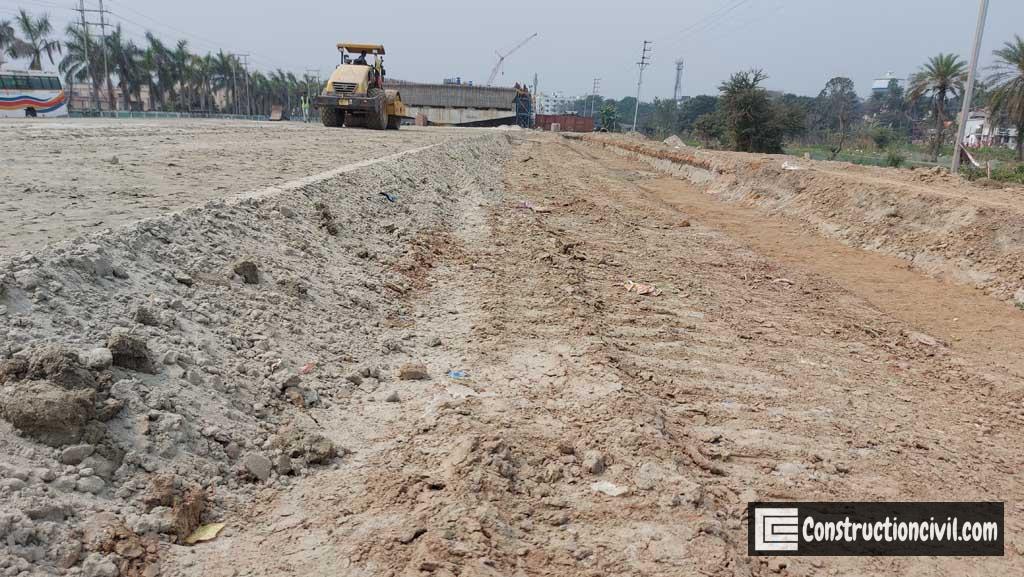
Also, Read: Soil Reinforcement Methods – Advantages and limitations
Ground Improvement Techniques in Civil Engineering Using Precompression/Preconsolidation of In-situ Soil:
Precompression/Preconsolidation of in-situ soil increases the soil bearing capacity, and it reduces the compressibility of the weak soil strata by forcing loose cohesionless soils to densify the clayey, silty soils to consolidate. Compaction of the actual soil strata is achieved by placing a temporary load on the top before constructing the planned structure.
- Expulsion of water from the pores causes consolidation of the cohesive (clayey/silty) soil, resulting in the buildup of shear strength and substantially reduced values of final settlements of foundations.
- Proper compaction is achieved by pre-compression of the subsoil by subjecting the area to a preload.
- Application of Preloading may be in stages to allow the gradual buildup of soil strength, enabling it to safely support further steps of preload.
- The pre-consolidation process may accelerate by providing vertical drainage channels in poorly draining soils such as soft clays.
- Preloading with or without Vertical Drains, namely Prefabricated Vertical Drains (PVD), Sand Column, Stone Column, Electro-osmosis, etc., are generally used for these types of ground improvement techniques in civil engineering.
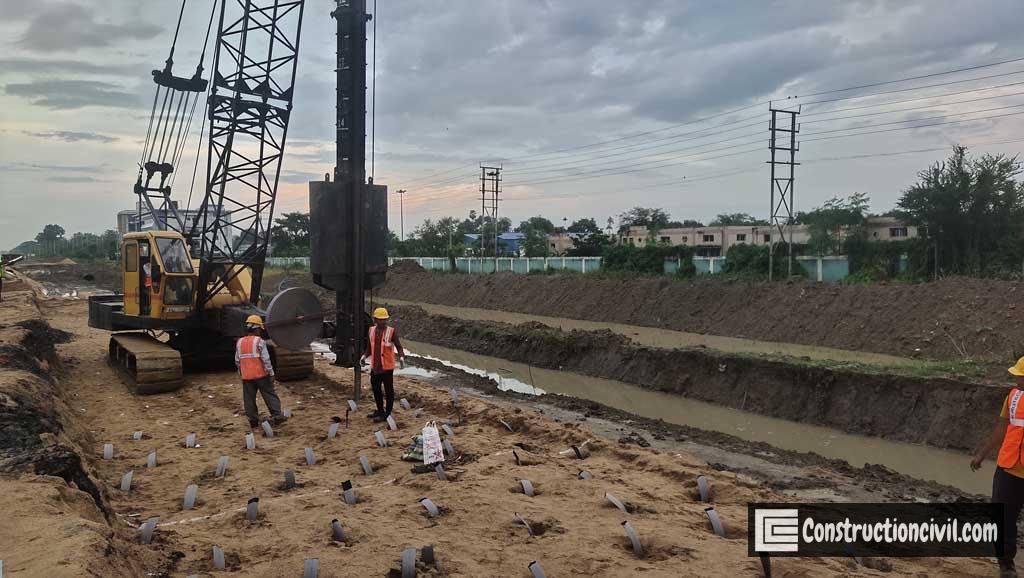
Also, Read: Vibroflotation, Blasting & Dynamic Compaction – Ground Improvement
Ground Improvement Techniques in Civil Engineering Using Injections and Grouting into In-situ Soil:
Injection of fluidized materials into voids of the soil strata or spaces between the ground and adjacent structures under pressure is called grouting. The primary purpose of grouting is to deliver firmer, denser, and less permeable soil or rock strata.
- Injection of chemicals like lime, cement etc., into subsoils improves the formation of bonds between soil particles.
- Mechanical compression of the subsoil is also achieved under certain conditions, provided grout is pumped in under high pressure.
- Available methods of grouting are suitable for sands as well as fine-grained soils.
- Formed impervious formation with increased strength and reduced compressibility, subsequently eliminating liquefaction danger.
- Particulate grouting, chemical grouting, displacement grouting, pressure injected Lime grouting, Jet Grouting etc., are generally used for ground improvement grouting methods.
- Moderate to a high level of cost is involved in these types of ground improvement techniques in civil engineering.
Also, Read: SPT Test for Soil Procedure, Refusal Conditions & Correction
Ground Improvement Techniques in Civil Engineering Using In-situ Soil Reinforcement:
To achieve desired properties, extensible or inextensible materials such as metallic strips or polymeric reinforcement should be provided within the soil strata, known as soil reinforcement. Soil reinforcement by metallic and polymeric strips is now a well developed and widely accepted ground improvement techniques in civil engineering. Anchoring and soil nailing is also adopted to improve the soil bearing capacity.
- Reinforcement introduced into the in-situ soil mass causes marked improvement in stiffness and consequently load carrying capacity and stability of soil mass.
- Reinforcements may also be in the form of horizontal or vertical strips/membranes to increase the capacity of soil to withstand tensile, shear and compression loads and contribute towards the improvement of stability of soil mass significantly.
- The reinforced earth technique is beneficial for urban areas with minimal land availability, and construction is required without disturbing the traffic.
- Planks (timber, reinforced concrete or prestressed concrete), grids and geogrids, sheet reinforcement, nails, anchors, composite reinforcement etc., are generally used for soil reinforcement ground improvement.
- Low/moderate to a high level of cost in these types of ground improvement techniques in civil engineering.
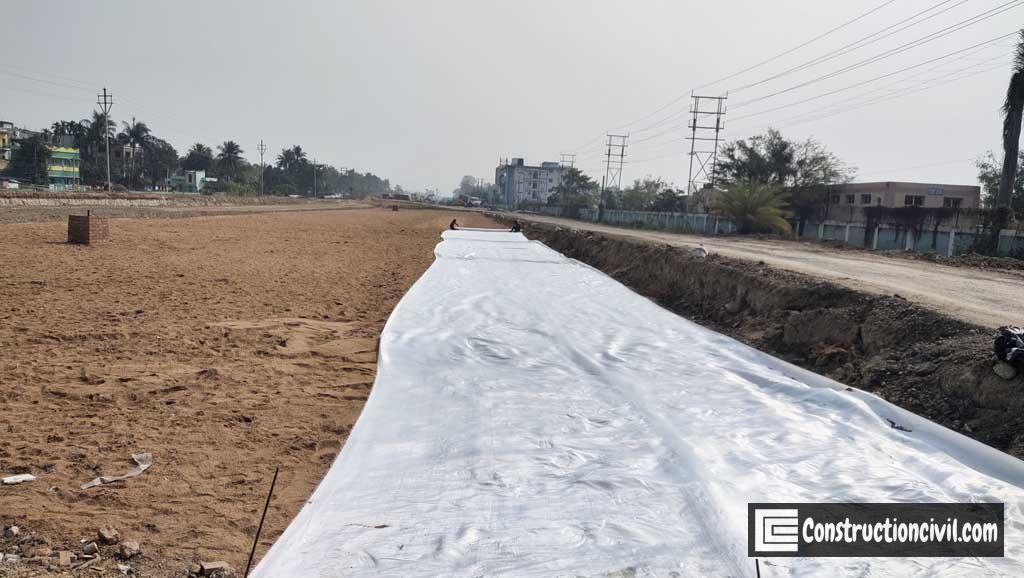
Also, Read: PVD Drain Installation for Ground Improvement
Ground Improvement Techniques in Civil Engineering Using Admixtures:
Ground improvement techniques using admixtures are generally adopted to modify any one or more of the soil properties to improve the desired performance of the soil (mostly Expansive Soil).
Commonly Used Chemicals for Ground Improvement techniques are
- Lime Stabilization
- Cement Stabilization
- Combination of Lime & Cement
- Calcium Chloride Stabilization
- Fly ash Stabilization
- Bitumen Stabilization
- Use of Cohesive-Non-Swelling (CNS) Layer
Objective:
- To increase the strength of the soil.
- To decrease shrink-swell characteristics of the soil.
Soil Stabilization with Lime:
It is used to modify the clayey soils or used as a binder. Clayey soils of high plasticity are treated with lime, decreasing the plasticity. After the treatment, the soil becomes friable and easy to pulverize, with less water affinity. Lime imparts binding action in the case of granular soils, and for fine-grained soils, due to pozzolanic action, the strength will increase with the addition of cement.
When clay is treated with lime(Quick or Hydrated), commonly, two possible reactions are
- First Reaction: Rapid within an hour or two results in an immediate reduction of plasticity index & correspondingly reduction in shrink-swell behaviour. The requirement of Lime for First Reaction is 2 to 3% (Lime Fixation Quantity).
- Second Reaction: Slow within a few weeks results in cementing and hardening action & correspondingly increase in strength. The requirement of Lime for Second Reaction is 6 to 9 % (Optimum) for a short curing period of 3 to 4 weeks.
Also, Read: Geotechnical Investigation Objectives and Guidelines
Soil Stabilization with Cement:
Cement stabilization is accomplished by mixing pulverized soil and Portland cement with water and compacting the mix to attain a solid soil-cement material.
- Suitable for Well graded granular soil.
- The presence of organic matter (> 2%) in soil interferes with the hydration of cement and hence weakens soil cement stabilization.
- Increase in strength with more cement content.
- Strength of soil-cement increases with the curing period like concrete.
- Rapid strength gain of soil-cement in moist and high-temperature conditions.
- Gain more strength and durability of a soil-cement mixture is slightly higher moisture content (2 to 4 %) during field compaction.
Soil Stabilization with Lime & Cement:
- The above combination is suitable for expansive soil.
- For a given lime content, strength increases with increasing cement content.
- Lime content is optimized for maximum strength with a specified amount of cement content and a specified curing period.
Calcium Chloride Stabilization:
Calcium chloride has some physicochemical effects over fine-grained components of soil. For example, suppose sodium ions(Na+) are present around negatively charged clay surfaces. In that case, they will be replaced with calcium ions(Ca++), which reduces the thickness of the double layer, lowers plasticity and increases strength by strengthening molecular bonds between particles.
Fly ash Stabilization:
We can use fly ash alone as a structural filling material, and scope exists for operating ground improvement techniques in civil engineering to find more medium to a high volume of work in the following ways:
- Using cement or lime to stabilize the fly ash
- Stabilizing soils with cement, lime and fly ash mixture
- Use fly ash in the containment of toxic wastes
Bitumen Stabilization:
The use of bitumen in soil stabilization is generally called bituminous stabilization, and it can be used for clay and sands, provided they can be mixed with bitumen. For clays, it helps to repel water making it insensitive to moisture changes, and in the case of cohesionless soils, bitumen binds the particles.
- Soil stabilization with bituminous material reduces dry density and also reduces OMC.
- Bitumen stabilization provides both binding and waterproofing action.
- In the case of granular soil, the coarser grains are individually coated and stuck together, and for fine-grained soils, bituminous material plugs up the voids.
Ground Improvement Techniques in Civil Engineering Using CNS Soil Layer:
- CNS Soil – Clayey soil with certain cohesion but having no expansive characteristics, e.g. Locally Available Moorum soil.
- Very effective in counteracting shrink-swell characteristics and retaining shear strength of expansive soil.
- Widely used in various Civil Engineering construction, including Canals, Roads etc.
- Limited thickness of around 1.00 m CNS layer is required to eliminate the detrimental effects of expansive soil.
- Reduction in the heave of underlying expansive soil with an increase in thickness of CNS layer having constant cohesion.
- Reduction in requirement of the thickness reduces the CNS layer with an increase in cohesion.
- Governing criteria in counteracting swelling and swelling pressure of expansive soil – Cohesion and thickness of the CNS layer.
Also, Read: Major Role of Ground Improvement in The Structure Foundations
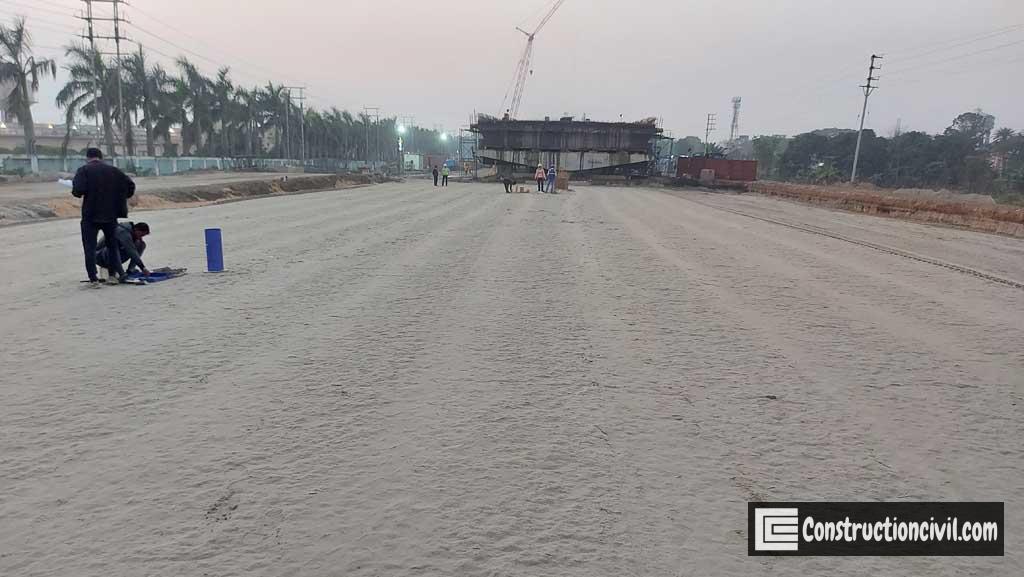
The Tentative Thickness of the CNS Layer:
The tentative thickness of the CNS layer Required to nullify the effect of Swelling Pressure of Expansive Soil are listed below-
| Sl. No. | Swelling Pressure of Expansive soil (Kg/Cm2) | Tentative Thickness of CNS Soil Layer Required (cm) |
| 1 | 1.0 – 1.5 | 75 – 85 |
| 2 | 2.0 – 3.0 | 90 – 100 |
| 3 | 3.5 – 5.0 | 105 – 115 |
Also, Read: Dynamic Load Test on Piles – Objective, Procedure & Analysis
